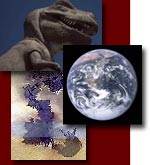| Site Map | Contacts | Links | Newsletter | |
The Bible and Science:
Are Dinosaurs Mentioned in the Bible?
Behemoth
Behemoth in contrast to the leviathan is a giant land animal, not a sea creature. There seems to be a similar animal in a Ugaritic text BH called ėgl il ėtk meaning "the ferocious bullock of El" (Pope 1965, 321; KTU 1.3 III 44). Another text describes an animal as having horns like bulls, humps like buffalo, and the face of Baal (Ibid; KTU 1.12 I 30-33). This beast may be the same as the Sumerian and Akkadian "bull of heaven" who was slain by Gilgamesh and Enkidu in the Gilgamesh Epic (Ibid., 322; ANET, 83-85; Heidel 1946, 53-55, An Outline with Bibliography and Links, see below).
The description in Job 40:21-23 seems to allude to the area around Lake Huleh which was filled with buffalo. His tail is like a cedar branch that can easily bend or sway (Pope think this refers to sexual arousal). This does not mean his tail was as long as or as big as a huge cedar tree for verses 21-23 say, "Under the lotus plants he lies, hidden among the reeds in the marsh. The lotus conceal him in their shadow" (NIV). Reeds and lotus can not hide a huge dinosaur.
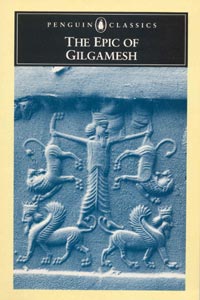 |
 |
| The Epic of Gilgamesh translated by N.K. Sanders, Penguin Books, 1960. | The Epic of Gilgamesh and Old Testament Parallels translated by Alexander Heidel, U. of Chicago, 1946. |
Gilgamesh Epic
The Epic of Gilgamesh describes the battle with the Bull of Heaven. Enkidu seized the Bull by the horns. "The Bull of Heaven foamed in his face, it brushed him with the thick of its tail. Gilgamesh followed the bull, he seized the thick of his tail, he thrust the sword between the nape and the horns and slew the bull" (Sandars 1972, 88; ANET, 85, 505). The "thick of his tail" does not mean a dinosaur’s big tail, but the tassel at the end of its tail. The Akkadian is ku-bur zib-ba-ti-su, meaning "thickness of his tail" (ANET, 505). "It refers to the tassele at the end of the tail in contrast to the thin middle part" (Ibid., note 29). The horns of the bull are plated with lapis two inches thick, weighing thirty pounds, and holding 105 gallons each (Heidel, 55). This was a huge mythical bull which is associated with the constellation Taurus, the bull (Black and Green, 49).
Gilgamesh also battles another monster called "Huwawa" (Babylonian) or "Humbaba" (Assyrian) who lives in the Cedar Forest. Huwawa is described by "his roaring is the flood-storm, his mouth is fire, his breath is death" (ANET, 79; Jacobsen, 200). This does not mean it breaths fire. This is poetical language describing its snort that looks like smoke on a cool morning.
Dragons
The KJV uses the term "dragon" which comes from the Greek word drakon which means "serpent." It refers to a monster with a scaly snake like body. The Greek New Testament uses drakon 12 times only in the book of Revelation which the KJV translates as "dragon" (Rev. 12-13, 16:13, 20:2). The dragon in Revelation has seven heads similar to the leviathan in Ugaritic and Psalm 74:14 (Gibson, 50, 68; Walace, 290). Satan is called a "dragon" in Revelation 20:2.
In the Old Testament the KJV uses the term "dragon" for the Hebrew words tannim meaning "jackals" and tannin meaning "serpent, or sea monster" (BDB, 1072; Gesenius, 868-9). It seems the KJV mistranslated these two separate words. Tannim is from the root tan meaning "to howl" and tannin is from the root tanan "to smoke" (Ibid.). Jackels are known for their howling, and are associated with desolate areas. Tannin or "smokers" probably came from seeing the spouts of whales or the snorting of animals which looked like smoke coming from a fire inside. Our warm breathe in winter looks like smoke. This is probably how the idea of fire-breathing dragons started. The Hebrew is not referring to any dinosaurs.
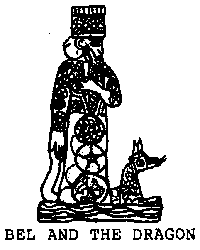 |
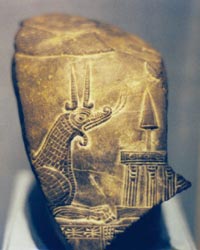 |
In the LXX the story of Bel and the Dragon is added to the book of Daniel. Daniel exposes the priests who were eating the food offered to the god Bel. Cyrus has them killed. Daniel then feeds the living dragon pitch, fat and hair so that it dies. The Babylonians force the king to put Daniel into the lion’s den where he is delivered by God. Daniel’s enemies are cast into the den and immediately eaten.
The Greek word for "dragon" means "serpent" not dinosaur. In Babylon they worshipped the god Nina in the form of a serpent (IBSE, Vol.1, 428-9). A number of monsters in ancient times were the results of finding fossil bones.
 |
This giant fossil giraffe skull could easily been mistaken for a dragon. Many giant fossil giraffe skulls from the Miocene Epoch are found around the Mediterranean (Mayor, 2000 p. 161). |
Giants
In Homer’s book Odyssey (Book 9), Odysseus lands on an island of giant Cyclopes. Later the Greek historian Thucydides stated that the island of Sicily on the slopes of Mount Etna was the home of the Cyclopes. Giant bones and one eye skeletons were found there in the Middle Ages, but these bones were of mastodons, not humans. A mastodon skull looks like it has one giant eye in the center of its head.
| This mastodon skull looks like a one eyed monster. | 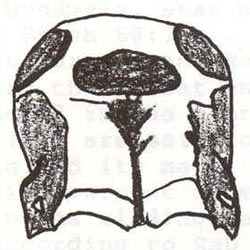 |
Large fossil bones were thought to be from giant humans, or an angel that had fallen from heaven. Pliny says that the skeleton of Orion was discovered on the island of Crete which was 35 feet long (Gayard-Valy, 15-18).
Cyclops
Myth Spurred by "One-Eyed" Fossils?
February 5, 2003 The fossil of a
giant animalmuch bigger than modern elephantshas been unearthed on the
Greek island Crete. The extinct animal's extremely large nasal opening could
have been the inspiration for Cyclops, a race of giants in Greek mythology
with a single eye in the middle of the forehead.
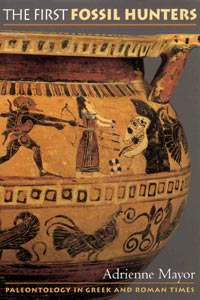 |
There is an excellent book about this entitled "The first Fossil Hunters" by Adrienne Mayor (To her web site Click Here). |
Unicorns
The KJV mentions "unicorns" nine times (Numbers 23:22; 24:8; Deuteronomy 33:17; Job 39:9,10; Psalm 22:21; 29:6; 92:10; Isaiah 34:7). It is an unfortunate translation of the Hebrew reem which means "wild ox" (BDB, 910b). It seems that the LXX translation made the error which was carried over into the Latin unicornis.
The idea of a unicorn probably came from seeing a rhinoceros. In the Middle Ages when fossil tusks or horns were found, they were said to come from unicorns (Gayrard-Valy, 22).
Leviathan
The word "leviathan" seems to be a general term for any large sea animal. The name "Leviathan" occurs 6 times in the Old Testament. Let’s look at these passages.
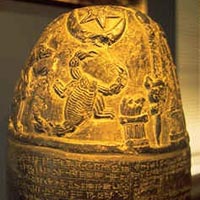 |
Boundary stone called a kudurru Nebuchadnezzar I, ( U of Penn Museum; Heidel, fig.4, ANEP, fig.519). |
Job 3:8
Job 3:8 says, "May those who curse days curse that day, those who are ready to rouse leviathan" (NIV). The KJV has "their mourning" but the marginal note says, "Or, Leviathan." The Hebrew is clearly, /tywl, "leviathan." Job wishes that soothsayers would have conjured up leviathan to swallow up the day of his birth (NIV note). When there was an eclipse of the sun or moon the ancients believed leviathan swallowed them so total darkness prevailed until he released his prey (Delitzsch, 1976, 78). Job may be calling on the giants Ohya and Ahya who battled Leviathan before they were destroyed in Noah’s flood according to the Book of Giants (TDOT 1995, Vol.7, 506). There is an interesting Aramaic incantation text that says, "I shall deliver you with great magic from Leviathan, the sea monster" (Ibid, 505). Job 3:8 may be referring to the constellation Draco. In ancient times the sky was seen as a mirror image of the earth below. So the leviathan in the sea or nether world had a counter part in the sky, Draco who would swallow the sun or moon when there is an eclipse.
Job 41:1
Job 41:1 says, "Can you pull in the leviathan with a fishhook" (NIV). This whole chapter describes this terrible sea creature probably a giant crocodile. It is said to have a tongue (verse 1), a nose and jaw (v.2), limbs (v.12), mouth ringed with fearsome teeth (v.14), and a back tightly fitted with scales (v.15). It describes smoke coming from his nostrils. This is poetic language and is probably like seeing our breathe which looks like smoke in cold weather. There is a similar description of God coming in a thunderstorm in Psalm 18:8. Bartram observed an alligator "that as it comes on the land a thick smoke issues from its distended nostrils with a thundering sound. This thick, hot steam, according to credible description which is presented here, produces the impression of a fire exiting beneath, and bursting forth" (Delitzsch 1976, 374). The sneezing of fine water particles in the sun spreads light. Eyes of animals at night can shine or glow. The crocodile’s eyes and eyelids glow red under water like the red at dawn or dusk. It is not talking about real fire coming out of its mouth. This is poetic language (See Revelation 19:12, and Daniel 10:6). In the Dead Sea Scrolls 11Q10 a targum of Job translates leviathan as "Crocodile" (Martinez 1994, 152).
Psalm 74:14
Psalm 74:14 says, "Thou brakest the heads of leviathan in pieces, and gavest him to be meat to the people inhabiting the wilderness" (KJV). Here leviathan has more than one head in the Hebrew. In Ugaritic it is clear that leviathan (ltn) had seven heads. In the story of Baal and Mot it says, "for all that you smote Leviathan the slippery serpent (and) made an end of the wriggling serpent, the tyrant with seven heads?" (Gibson 1978, 68; ANET, 137-8; KTU 1.5, I.1-3). In Sumerian poetry there is mus-sag-imin, the seven headed serpent. In Old Akkadian the seven-tongued serpent, hubullu may also have seven heads (TDOT Vol.7, 507). There is even a Sumerian carving of a seven-headed monster (ANEP fig. 671,& 691). The many-headed Greek hydra who was killed by Hercules may come from the ancient Near East stories of Leviathan. Could the idea of a many headed sea monster come from seeing a giant squid or octopus, and assuming the tentacles were heads. It seems that the word "leviathan" is a general term for any large sea animal. In Job 41 it clearly has one head, but in Psalm 74 it has many heads, probably a giant squid. In the Book of Revelation 13:1 the beast arising from the sea has seven heads. This seems to be alluding to the leviathan of seven heads tradition.
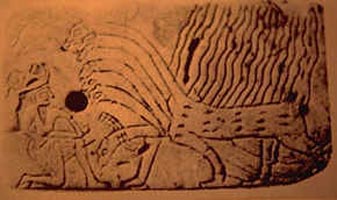 |
Sumerian carving of a seven-headed monster (ANEP, fig. 671 & 691). |
Greek Texts
In the Odyssey there is a description of a sea monster called "Scylla." "Her legs and there are twelve are like great tentacles, unjointed, and upon her serpent necks are borne six heads like night-mares of ferocity and triple serried rows of fangs and deep gullets of black death. Half her length, she sways her heads in air" (Fitzgerald 1961, 212; Book 12:88-94; LCL 104, 439). This seems to describe the giant squid, Architeuthis which Ellis says is "probably responsible for more myths, fables, fantasies, and fictions than all other marine monsters combined" (1994, 122). Therefore it seems most likely that the stories of a seven-headed sea serpent arose from seeing the giant squid, Architeuthis.
The Hydra who was killed by Hercules is probably a giant octopus. The hydra is said to have nine heads, and when one was cut off, two more grew in its place (Ibid, 260). Pliny the Elder lumps the squid and octopus together as polyp in his book Naturalis Historia. Let’s look at some actual sightings.
Sightings
1555 AD
In 1555 Olaus Magus wrote a book called Historia de Gentibus Septentrionalibus in which he describes a monstrous fish as follows, "Their forms are horrible, their heads square, all set with prickles, and they have long sharp horns round about like a tree rooted up by the roots: They are ten or twelve cubits long, very black, with huge eyes Ö. the Apple of the Eye is of one cubit, and is red and fiery coloured, which in the dark night appears to Fisher-men afar off under waters, as a burning fire, having hairs like goose feathers" (Ellis 1994, 124). De Montford says its "huge protruding eyes actually seemed to flash fire" (Ibid, 265). The giant squid has the largest eyes of any animal. One observer said it skin was "brilliant carmine red" (Ibid, 129).
1633 AD
In 1632 a sea monster was said to have seven tails with eyes (Ibid, 126).
1673 AD
In 1673 another sea monster is described as having two heads and ten horns.
1845 AD
An 1845 description says there was "boiling of the water on both sides of it" and moved like a snake (Ibid., 366-7).
1879 AD
In 1879 a giant squid washed ashore and was "churning the water into foam by the motion of its immense arms and tail "ejecting large volumes of water" (Ibid., 136). Frederick Aldrich, an expert on giant squid examined a 20 foot long immature specimen that he believed could grow to 150 feet in length (Ibid, 128).
 |
Monster of the Sea by Richard Ellis published by Knopf, 1994, is an excellent book uncovering these mystery sightings. |
Psalm 104:26
Psalm 104:26 says, "There go the ships: there is leviathan, whom thou hast made to play therein" (KJV). Clearly the habitat of leviathan in this context is the sea. The ships sail in deep water so this can not be a crocodile. This may refer to the whales , or more likely dolphins who like to play following ships. Apollonius Rhodius in the third century BC wrote in his book The Argonautica, "and the fishes came darting through the deep sea, great mixed with small, and followed gamboling along the watery paths" (Book 1.574). Apollonius describes the fish playfully following the ship as sheep follow a shepherd.
Aelian writes, "There are Sea-monsters (off the coast of India) half a stade in length (300 feet), and so powerful are they that, when they blow with their nostrils, they often hurl up a wave from the sea to such a height that ignorant and inexperienced people take it for a waterspout (hurricane)" (1959 Book 17:6). This is clearly the description of a whale. The spout of a whale may also have been seen as smoke from its fiery mouth by ancient mariners.
Isaiah 27:1
Isaiah 27:1 says, "In that day of the Lord with his sore and great and strong sword shall punish leviathan the piercing serpent, even leviathan that crooked serpent; and he shall slay the dragon that is in the sea" (KJV). This is very similar to the Ugaritic description of Leviathan that was quoted earlier. The terms "Rahab" and "tannin" are also used in parallel to Leviathan.
In other ancient literature the Book of Enoch says, "On that day, two monsters will be partedone monster, a female named Leviathan, in order to dwell in the abyss of the ocean over the fountains of water; and (the other), a male called Behemoth, which holds his chest in an invisible desert whose name is Dundayin, east of Eden" (I Ethiopic Enoch 60:7-8).
In the targums and Rabbinic literature the "great whales" (KJV, but "tannin" in the Hebrew) in Genesis 1:21 are said to be the Leviathan and its mate. Leviathan, the gliding serpent is male, and Leviathan, the winding serpent is female according to Reb. Judah. God castrated the male and killed the female preserving her in the salt water for the righteous to eat in the world to come (Bowker 1979, 104; see 2 Ezra, also called 4 Ezra 6:49,52: 2 Baruch 29:4 in Charlesworth 1983).
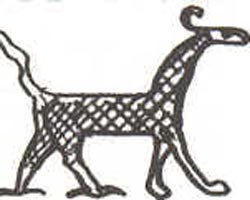

Snake dragon, Ishtar Gate in Ancient Babylon.
Snake-dragon
The Leviathan may be a composite of several sea monster. Ancient Near Eastern pictures abound with composite monsters. The snake-dragon of Babylon pictured on its walls, has a snake’s body with horns, lions forelegs, and a birds hind legs (Black and Green 1992, 166). Sometimes dinosaur bones are mistaken as monsters.
One thing for sure is that leviathan is not a dinosaur. In the Hebrew it is clearly a general term for a large sea creature. It may live in the ocean or river. It may be a living animal or a composite mythical creature inspired by fossil bones or the constellations. The context will usually determine the meaning.
Rahab
In Isaiah 51:9 "Rahab" is used in parallel to tannin, sea monster. In Isaiah 30:7 and Psalm 87:4 "Rahab" is used as a designation for Egypt which is symbolized by a giant crocodile (Heidel, 104-5). In Isaiah 27:1 the leviathan is also used in parallel to tannin. Some equate these monster to the constellations Draco, Hydra, and Serpens (ISBE, Vol.1, 309). Some ancients saw the clouds as a personification of a dragon (Job 26:12; Heidel, 104-5). Some equate Rahab with the mythical sea monster Tiamat who was split open to make heaven and earth by Marduk (Job 16:12).
Book of Revelation Monsters
In the Book of Revelation there are several monsters or dragons described. The Greek New Testament uses drakon 12 times only in the book of Revelation which the KJV translates as "dragon" (Rev. 12-13, 16:13, 20:2). There is an interesting book recently published by Fortress press entitled Social-Science Commentary on the Book of Revelation by Bruce Malina and John Pilch that relates much of the vivid description in Revelation to constellations in the sky. They believe that the Book of Revelation is an astral prophecy.
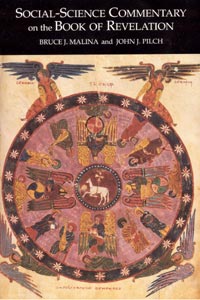 |
Social-Science Commentary on the Book of Revelation by Bruce Malina and John Pilch published by Fortress Press, 2000. |
There is a red dragon in Revelation 12:1-18. Boll believes that the dragon corresponds best with the constellation Hydra which extends through one third of the zodiac. Just above the Hydra are the constellations Corax with 7 stars corresponding to 7 heads, and Crater with 10 stars corresponding to 10 horns, or 10 dorsal fins. Another possibility is the ancient constellation of Scorpio (Malina and Pilch, 2000 p.165).
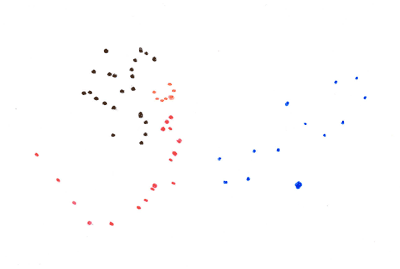 |
| Constellations: Serpens in red, Corona in orange, Virgo in blue, and Hercules in black. |
On today's star charts I think the dragon (which means serpent) should be identified with the constellation Serpens (Caput and Cauda connected with ten stars). The seven heads would be the constellation Corona (crown) Borealis which consists of 7 stars. This serpent is right at the feet of the constellation Virgo and Hercules. The Archangel Michael would be the constellation Hercules waiting to make war with the serpent (Rev. 12:7).
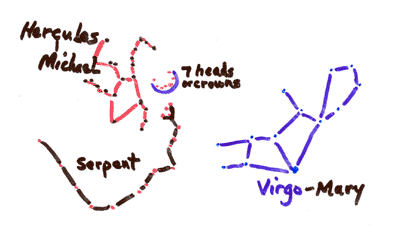 |
| Constellations outlined: Serpens in black with red stars, Corona in purple with orange stars,Virgo in purple with blue stars, and Hercules in red with black stars. |
The woman of Revelation 12 should be identified with the constellation Virgo. The woman is Mary who gives birth to Jesus. The 12 stars represents the 12 tribes of Israel. The 13 stars of the constellation Virgo may represent the 12 tribes plus Christ (the bright star Spica?). Another possibility is that the constellation Bootes represents the baby Jesus, and Mary's crown is the Big Dipper plus Canes Venatici.
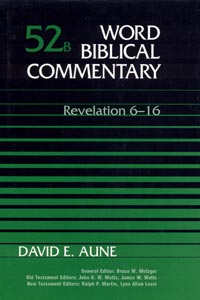 |
For an excellent detailed commentary on the Book of Revelation see Revelation: Word Biblical Commentary Volumes 52A,B,C by David Aune and published in 1997-98. |
The red dragon in Revelation 12 has seven heads similar to the leviathan in Ugaritic and Psalm 74:14 (Gibson, 50, 68; Walace, 290), and the Set-Typhon, red crocodile, of Egypt (NIV note 12:3).
Loch Ness Monster?
The most famous picture taken of the Loch Ness monster was in 1934. It has later been revealed that this picture is a fake, staged by a filmmaker named Marmadule Arundel Wetherell (Ellis, 22).
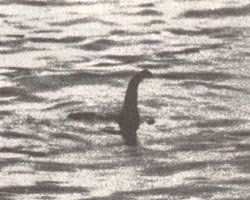
There have been other sightings and carcasses that have been mistaken for sea monsters or dinosaurs. In ancient times even up to the eighteenth century people believed in mermaids, but what they were really seeing were Manatees whose face looks human.
Plesiosaur?
Some think that a plesiosaur was caught in the net of a Japanese fishing boat in 1977. While the pictures look impressive, the scientific data points to a decaying basking shark. The carcass was 32 feet long and weighed about 4,000 pounds. Ellis states, "Before the carcass was discarded, one of the crewmen lopped off a piece of a fin, which contained horny fibers (ceratorichia) that characterized the elasmobranchs, and these were later identified as those of Cetorhinus maximus" which is the scientific name for the basking shark (Ellis, 69).
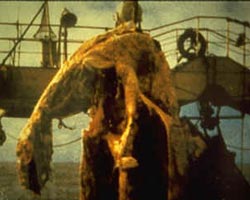
Alwyne Wheeler of the British Museum of Natural History agrees that this was a basking shark. He states, "Sharks are cartilaginous fish. When they start to decompose after death, the heads and gills are the first to drop from the body "fishermen have been foiled by the similarity of shark remains to a plesiosaur" (Ellis, 68-9).
Dr. Petit showed how the soft tissues of a basking shark decompose into the shape of a plesiosaur and seem to be hairy. "In the selachians the fibers of the surface muscles break up into whiskers when the skin rots" and seems to by hairy like stiff fur (Heuvelmans 1968, 135).
Even Answers In Genesis states that this is a basking shark. Other similar carcasses have washed up on the New Zealand shores which turned out to be basking sharks. See Letting rotting sharks lie.
Cherubim
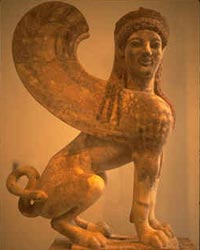 The
cherubim in the Bible seem to be a composite animal similar to the sphinx
of Egypt. In Ezekiel chapter one these creatures have combined features
of humans, lions, bulls, and eagles. The attributes of God were expressed
in concrete terms, like the strength of the lion procreative power of the
bull, the swiftness of an eagle, and the wisdom of man to show God's omnipotence
and omniscience. There are several carvings of what seems to be cherubim
that have been found (BAR 21:4, pp.36-41).
The
cherubim in the Bible seem to be a composite animal similar to the sphinx
of Egypt. In Ezekiel chapter one these creatures have combined features
of humans, lions, bulls, and eagles. The attributes of God were expressed
in concrete terms, like the strength of the lion procreative power of the
bull, the swiftness of an eagle, and the wisdom of man to show God's omnipotence
and omniscience. There are several carvings of what seems to be cherubim
that have been found (BAR 21:4, pp.36-41).
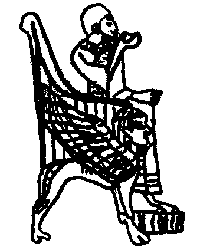 |
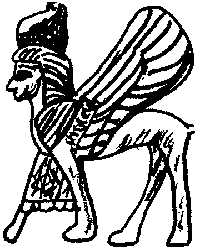 |
| Cherub throne | Cherub ivory |
The Cherubim spread out their wings over the Ark of the Covenant, above the mercy seat. The Cherubim are guardians. They guarded the entrance to the Garden of Eden with flaming swords (Genesis 3:24). The Cherubim served as a throne for God's presence (Psalm 80:2).
Dr. Ralph Wilson thinks the Ark of the Covenant is actually a throne chair for God (I Samuel 4:4). He has pictures of what cherubim probably look like at Near Eastern Thrones and the Ark of the Covenant.
Seraphim
In Isaiah's vision of God the seraphim are guardians before God's throne (Isaiah 6). They praise God saying, "holy, holy, holy is the Lord of Hosts." They have six wings where cherubim have only two. The Hebrew word for seraphim is "fiery ones" (BDB, 977). They may have serpent like bodies (see Numbers 21:8, Deuteronomy 8:15, Isaiah 14:29, 30:6; fiery flying serpents). They may personify lighting while the cherubim the clouds. Cognate roots are sharrapu the Babylonian fire-god, Nergal, and seref, the Egyptian guardian of graves called the "griffin" in English (Ibid). In Jewish theology the Seraphim, Cherubim, and Ophanim are the three highest orders of angels (ISBE, Vol.4, p.2732).
Prehistoric Fossil May Have Inspired Greek Myths
The bone of a large extinct creature, once treasured by the ancient Greeks, has finally found a permanent home in England. Known as the Nichoria bone, the blackened fossil is part of the thigh bone of an immense extinct rhino that roamed southern Greece perhaps a million years ago. The bone was collected by ancient Greeks and may have even helped inspire certain beasts in Greek classical mythology. It was then rediscovered 40 years ago. "Most likely, the ancient Greeks found the bone in the lignite deposits of the Megalopolis basin, known in antiquity as the 'Battleground of the Giants.' There, the dense concentration of large fossil bones inspired the belief that entire armies of giants were blasted by Zeus's thunderbolts," says Mayor who wrote "The First Fossil Hunters." Discovery News
Bibliography
Aelian: On the Characteristics of Animals. 1959. Trans. by Scholfield. Cambridge: Harvard University Press.
ANEP: Ancient Near East in Pictures Relating to the Old Testament. 1969. 2nd Ed. By James Pritchard. Princeton: Princeton University Press.
ANET: Ancient Near Eastern Texts Relating to the Old Testament. 1969. Princeton: Princeton University Press.
Apollonius, Rhodius. 1912. The Argonautica. Trans. by R.C. Seaton. London: Heinemann.
BAR: Biblical Archaeology Review 21:4 (July/August, 1995).
Black and Green. 1992. God, Demons and Symbols of Ancient Mesopotamia. Austin: University of Texas.
BDB: Brown, Driver, and Briggs. 1980. Hebrew and English Lexicon of the Old Testament. Oxford: Clarendon Press.
Bowker, John. 1969. The Targums and Rabbinic Literature. Cambridge: Cambridge University Press.
Charlesworth, James. 1983. The Old Testament Pseudepigraphia. Vol. 1. Garden Gity: Doubleday.
Creation/Evolution. P.O. Box 9477, Berkeley, CA 94709. Tel. (510) 526-1674.
Ellis, Richard. 1994. Monsters of the Sea. New York: Knopf.
Gayrard-Valy, Yvette.1994. Fossils: Evidence of Vanished Worlds. New York: Abrams.
Gibson, J.C.L. 1978. Canaanite Myths and Legends. 2nd Ed. Edinburgh: T&T Clark.
Heidel, Alexander. 1942. The Babylonian Genesis. Chicago: University of Chicago Press.
Homer. 1919. The Odyssey. Trans. By Murray. Loeb Classical Library 104-5. Cambridge: Harvard University Press.
ISBE: International Standard Bible Encyclopedia. 1939. Ed. By James Orr. Grand Rapids: Eerdmans.
Keel, Othmar. 1978. The Symbolism of the Biblical World. Trans. By Timothy Hallett. New York: Seabury Press.
Keil and Delitzch. 1976. Commentary on the Old Testament. Rpt. Grand Rapids: Eerdmans.
Martinez, Florentino. 1996. The Dead Sea Scrolls Translated. 2nd ed. Grand Rapids: Eerdmans.
Pope, Marvin. 1955. El in the Ugaritic Texts. Leiden: E.J. Brill.
. 1965. The Anchor Bible: Job. Garden City: Doubleday.
Sanders, N. 1972. The Epic of Gilgamesh. New York: Penguin.
TDOT: Theological Dictionary of the Old Testament. 1974. Ed. By Botterweck and Ringgren. Trans. By John Willis. Grand Rapids: Eerdmans.
Wallace, H. 1949. "Leviathan and the Beast of Revelation" BA 11= BA Reader I:290-98.
Wilson, Kinnier. 1975. "A Return to the Problem of Behemoth and Leviathan" VT 25:1-14.
